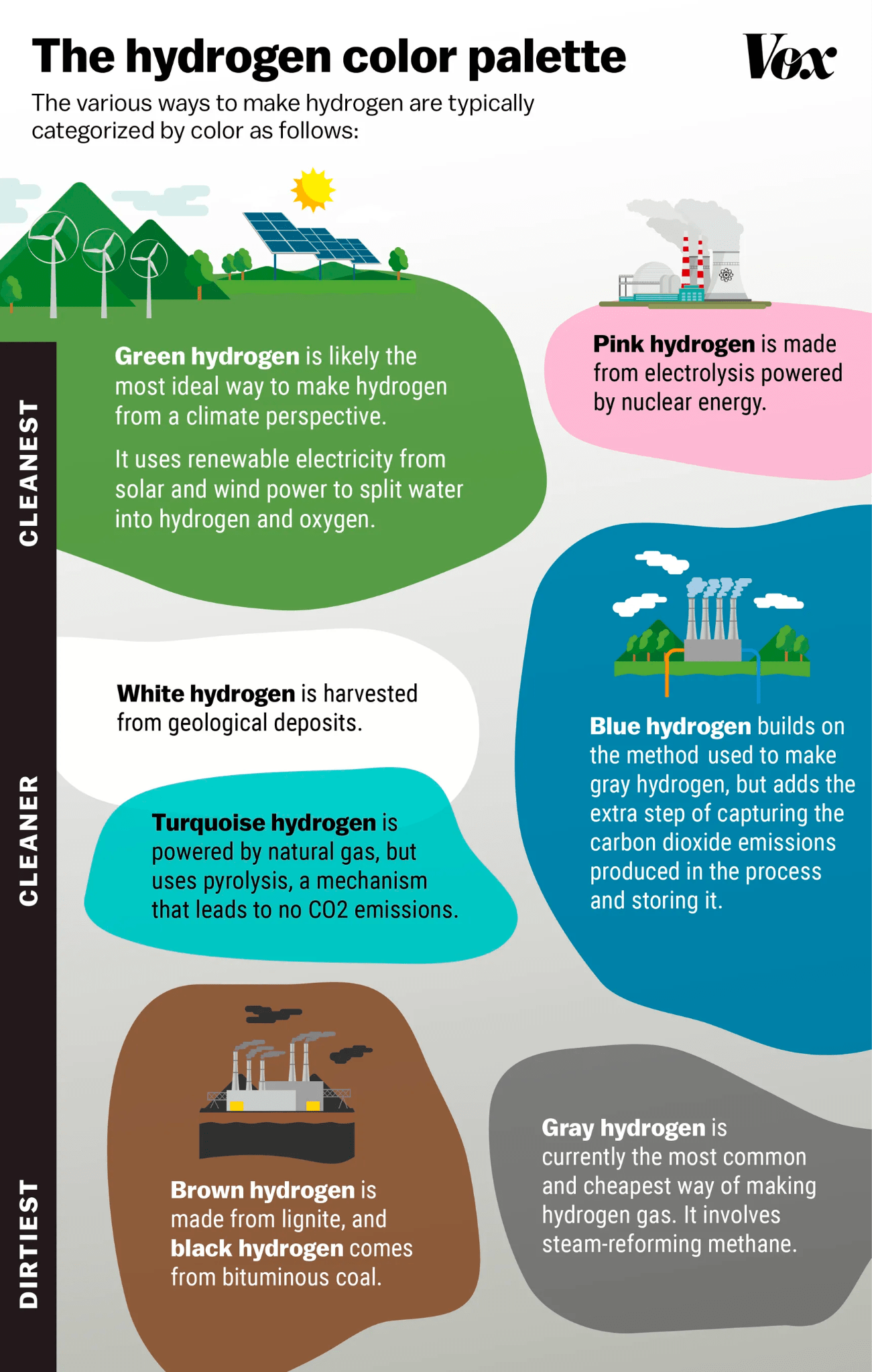Offshore wind might be the next big thing to energize the hydrogen market, but ensuring hydrogen production and use is truly clean will require work from industry, government, and advocates. The significance of hydrogen lies in its potential as a pathway to decarbonization, as burning hydrogen for energy does not emit greenhouse gasses. Renewable energy sources like wind and solar are rapidly gaining traction, as electrification plays a more critical role in the fight against climate change. However, there are sectors that are challenging to electrify, such as shipping and chemical production. Hydrogen could offer opportunities to decarbonize challenging industrial processes and further reduce greenhouse gas emissions if it can be generated in a way that limits additional greenhouse gas emissions.

Although hydrogen is the most abundant element in the universe, converting it for energy use is not a simple proposition. Most hydrogen is tied up as a component of other compounds, such as water (a compound composed of two hydrogen atoms and one oxygen atom; H₂O), or is otherwise difficult to access. To be cost effective, production must be done on an industrial scale.
Importantly, not all hydrogen is created equal. Colors (including gray, green, pink and blue) are currently used to identify hydrogen by the different ways in which it is produced. The vast majority of today’s hydrogen production is “gray”, made through steam-methane (from natural gas) reforming, which, in turn, emits high levels of greenhouse gasses. If these emissions are captured and stored so they are not released into the atmosphere where they can exacerbate global warming, then it becomes “blue” hydrogen. However, it should be noted that even with carbon capture and storage, “fugitive emissions” – which are unintended leaks of greenhouse gases during the extraction, processing, or transportation of natural gas – can still occur.
“Green” hydrogen refers to hydrogen produced using renewable energy sources, typically through a process called electrolysis, which splits water into its elemental constituents of hydrogen and oxygen and has no harmful byproducts. Byproducts of this include oxygen, which can be released into the atmosphere with no warming effect, along with some waste heat and brine from desalination. Currently, green hydrogen faces challenges, as it is more expensive to produce than both gray and blue hydrogen. Electrolysis requires a lot of energy and clean water, which is why large sources of renewable energy such as offshore wind farms are needed. However, it’s important to note that the energy required for electrolysis is significantly less than the energy that can be obtained when hydrogen is used as a fuel. As the price of electrolyzers and renewables decrease, clean hydrogen can become more cost competitive.
Hydrogen’s Potential
One major benefit of hydrogen is its ability to be stored and used for energy later, an advantage that could be suited to compensate for the intermittent power conditions of wind and solar energy (which require the wind to be blowing and the sun to be shining). Surplus electricity generated from renewables, which might otherwise go to waste, can be stored in the form of hydrogen.
Hydrogen’s future viability hinges on its cost. For clean, inexpensive hydrogen to become feasible it must be scaled for the future and integrated effectively and efficiently with renewable energy and industrial uses, as opposed to an incremental project-to-project process. By the mid-21st century, it’s estimated that several million metric tons of hydrogen per year could be required to support a fully-clean energy grid. To achieve this sooner, the annual hydrogen demand would be even higher.
The Bipartisan Infrastructure Law has earmarked 8 billion dollars for four hydrogen hubs, and the Inflation Reduction Act offers tax credits for clean hydrogen production, which are intended to help make it more cost competitive with dirtier production.
Concerns from Environmental Justice Leaders
Environmental justice (EJ) communities have raised concerns regarding the development of hydrogen infrastructure. In a letter to the Department of Energy (DOE), EJ organizations highlighted the potential for marginalized communities to be disproportionately affected by the buildout of hydrogen infrastructure and its associated production processes. Concerns also arise from the construction of extensive pipelines. The current reliance on fossil fuels for the majority of hydrogen production exacerbates these concerns, especially given the history of fossil fuel infrastructure in marginalized communities. Another critical issue raised is the lack of transparency from the DOE regarding Hydrogen Hub projects. Communities require comprehensive information about the potential environmental and societal impacts to make informed decisions about their energy futures.
While green hydrogen holds promise as a clean energy solution, its adoption and development must be approached with these EJ considerations at the forefront, ensuring that marginalized communities are both protected and empowered in the transition.
H2Hubs
The Department of Energy’s Office of Clean Energy Demonstrations (OCED) recently unveiled an initiative to establish seven Regional Clean Hydrogen Hubs (H2Hubs), backed by funding from the Bipartisan Infrastructure Law. The initiative seeks to decrease the cost of hydrogen production and fast-track commercial-scale deployment. The hubs are intended to contribute to the decarbonization of heavy industry and transportation, and traditional hydrogen production. With the announcement of the H2Hubs initiative comes the anticipated creation of tens of thousands of new jobs. These new roles will boost local economies and provide workforce development.
Historically, disadvantaged communities have shouldered energy infrastructure burdens. The DOE has placed a focus on prioritizing community needs, assessing community and labor engagement through Community Benefits Plans (CBPs) to ensure communities’ concerns are addressed and that benefits are derived from direct community input. The newly announced hubs are not finalized, and are still in the negotiation phase with the DOE. Over the next few months, it is important to ensure that community voices are prioritized to ensure that the proposed hubs benefit the communities in which they are located.
 Offshore Wind Energy
Offshore Wind Energy 

